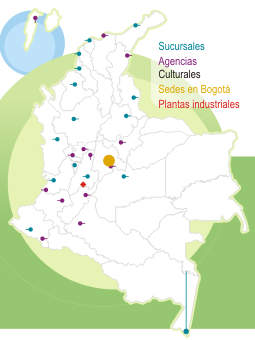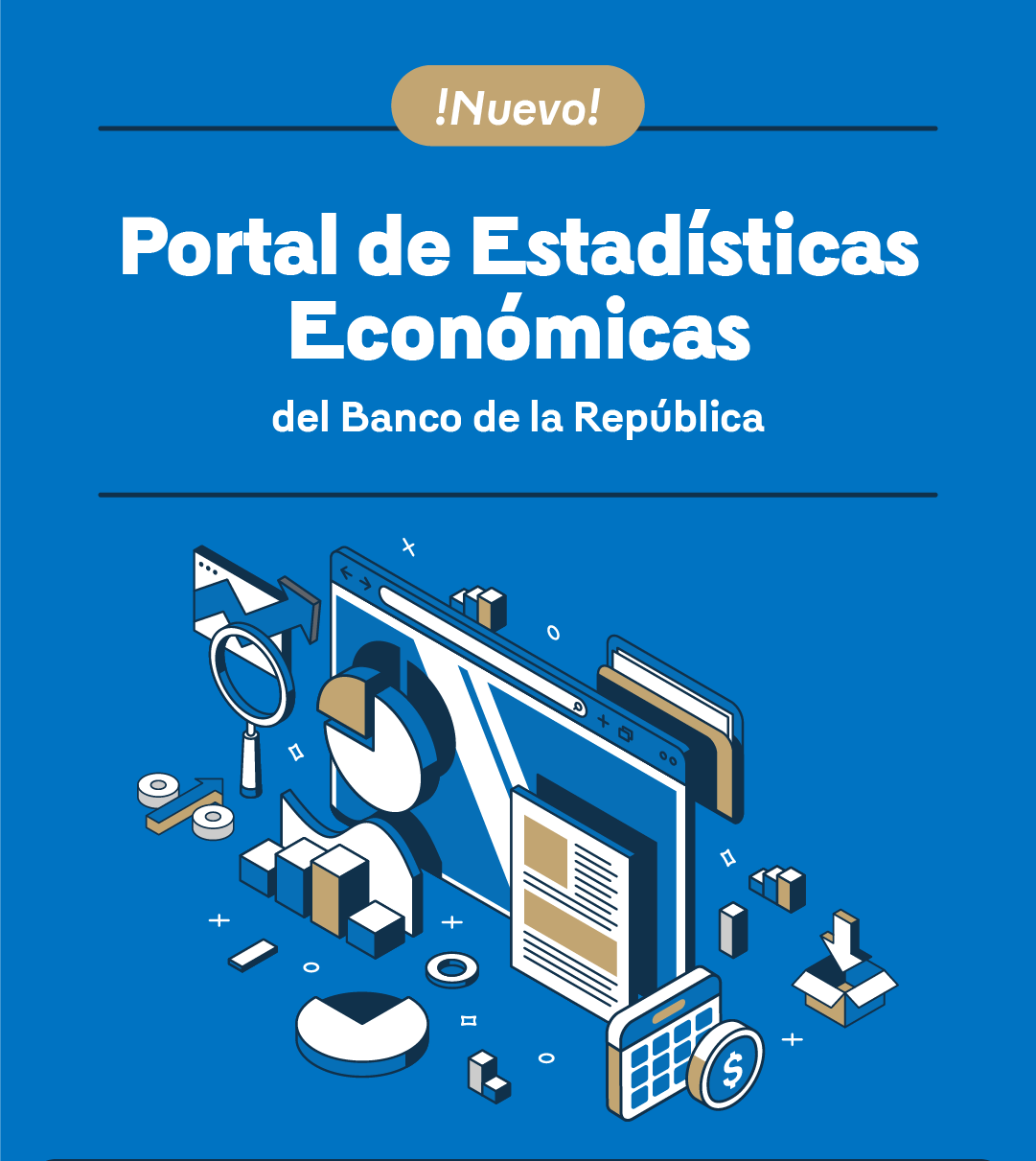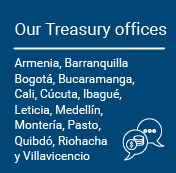Servicios
|
In compliance with Article 5, Act of Congress 31/1992, the Board of Directors of Banco de la República hereby submits to the Congress of the Republic of Colombia a report on the macroeconomic results for 2018 and the outlook for 2019 for its consideration. In the following chapters, the breakdown…
|
|
Monetary Policy in Colombia
As per its constitutional mandate, Banco de la República must ensure that the purchasing power of the currency is maintained in coordination with the general economic policy1. In order to fulfill this mandate, the Board of Directors of Banco de la República (hereinafter…
|
|
Colombia’s economy expanded by 2.7% in 2018, gaining momentum after a period of deceleration in which the annual growth rate fell from 4.7% in 2014 to 1.4% in 2017. While growth was still below potential (estimated around 3.3%), the uptick in 2018 suggests the groundwork for Colombia’s economic…
|
|
This Financial Stability Report (FSR) presents the Central Bank’s appreciation on the recent performance of credit institutions and their debtors, as well as on the main risks and vulnerabilities that could affect the financial stability of the Colombian economy. The FSR intends to keep the…
|
|
The Colombian financial system has not suffered major structural disruptions during these months of deep economic contraction and has continued to carry out its basic functions as usual, thus facilitating the economy's response to extreme conditions.
|
|
In this article, we study the role of cash and electronic payments in the payment ecosystems of Colombia and the world, and the factors that determine their demand.For these purposes, we address the following research questions:What are the determinants of demand for cash and electronic payment…
|
|
Findings regarding liquidity shocks
|
|
Banco de la República (the Central Bank of Colombia) is required by the Constitution to maintain the purchasing power of Colombia’s currency in coordination with general economic policy1. In order to fulfill this mandate, the Central Bank of Colombia’s Board of Directors (hereafter BDBR) has…
|
|
Presentación virtual del Informe de Política Monetaria a cargo del gerente general, Juan José Echavarría, y de Hernando Vargas, gerente técnico del Banco de la República.
[Video]
|
|
In the face of the multiple shocks currently experienced by the domestic economy (resulting from the drop in oil prices and the appearance of a global pandemic), the Colombian financial system is in a position of sound solvency and adequate liquidity. At the same time, credit quality has been…
|
|
Reporte de Estabilidad Financiera - 20 de mayo de 2020 from Banco de la República - Colombia on Vimeo.
|
|
Banco de la República (the Central Bank of Colombia) is required by the Constitution to maintain the purchasing power of Colombia’s currency in coordination with general economic policy1. In order to fulfill this mandate, the Central Bank of Colombia’s Board of Directors (hereafter BDBR) has…
|
|
Presentación del Informe de Política Monetaria Enero 2020, realizada en la sala de prensa del Banco de la República.
|
|
Presentación del Informe de Política Monetaria Enero 2020, realizada en la Universidad de la Salle.
|
|
Banco de la República (the Central Bank of Colombia) is required by the Constitution to maintain the purchasing power of Colombia’s currency in coordination with general economic policy1. In order to fulfill this mandate, the Central Bank of Colombia’s Board of Directors (hereafter BDBR) has…
|
|
Rueda de prensa virtual: Presentación del Informe de Política Monetaria - Agosto 2020 from Banco de la República - Colombia on Vimeo.
|
|
In Colombia, as well as in the rest of the world, the Covid-19 pandemic has seriously damaged the health and well-being of the people. In order to limit the damage, local and national authorities have had to order large sectors of the population to be confined at their homes for long periods of…
|
|
The Board of Directors of the Central Bank, as per the provisions of Article 5 of Law 31 of 1992, submits a report to the Congress of the Republic that describes the macroeconomic performance for the first half of 2019 and its prospects for the remainder of the year. The last two chapters report on…
|
|
1.1 Macroeconomic summary [Pág.
|
|
This Special Report analyzes the performance of housing credit and the real estate market, identifying potential risk sources in a scenario marked by the Covid-19 crisis. To this end, the dynamics of the supply, demand, and price indicators for the residential housing segment are studied. In…
|
|
ApproachThis paper studies the determinants of regional income inequalities (non-labor and labor) between 2010 and 2019 and how they changed due to the effects of the COVID-19 pandemic.
|
|
ApproachThis article addresses the question: Has the delay in the provision of transport infrastructure in Colombia, caused in part by historically low levels of investment, been a significant obstacle to its economic growth and regional and international integration? The question thus poses the…
|
|
ApproachThis Ensayos Sobre Política Económica (ESPE in Spanish) paper is framed within the area of macroeconomic literature that studies the expectation formation process. Under an inflation targeting scheme, expected inflation plays a central role in the analysis of monetary policy and its effect…
|
|
El principal objetivo del Banco de la República es preservar la capacidad adquisitiva de la moneda, en coordinación con la política económica general, entendida como aquella que propende por estabilizar el producto y el empleo en sus niveles sostenibles de largo plazo.El adecuado cumplimiento del…
|
|
Banco de la República’s main objective is to preserve the purchasing power of the currency in coordination with the general economic policy that is intended to stabilize output and employment at long-term sustainable levels.
|






































































